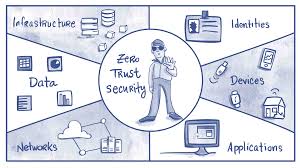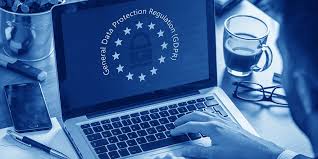In an increasingly connected world, our digital lives have become as significant as our physical ones. Every online interaction, from social media posts to shopping habits, contributes to your digital footprint. This collection of data not only reflects your online identity but can also impact your privacy, security, and even future opportunities. Understanding and protecting this digital presence has never been more critical.
Understanding Your Digital Footprint
Your digital footprint comes in two forms: active and passive. Active footprints are the deliberate traces you leave—social media posts, comments, or photos you upload. Passive footprints are collected without your direct involvement, including browsing history, location data, and information gathered by trackers and cookies.
The extent of this data collection often surprises people. In 2025, the average internet user generates approximately 1.7 MB of data per second—a staggering amount that includes everything from the device you're using to how long you spend on a particular page.
This information is valuable not just to advertisers but potentially to malicious actors as well. Understanding what comprises your digital footprint is the first step toward protecting it.
Essential Security Practices
Password Management: Despite decades of advice, weak passwords remain a leading cause of security breaches. In 2025, using a password manager is no longer optional but essential. These tools generate and store complex, unique passwords for every service you use, protected by a single master password or, increasingly, biometric authentication.
Modern password managers offer additional features like breach monitoring, which alerts you if your credentials appear in data breaches, and password health reports that identify weak or reused passwords.
Multi-Factor Authentication (MFA): Implementing MFA adds a crucial layer of security beyond passwords. The landscape of MFA has evolved significantly, with app-based authenticators and hardware security keys now preferred over less secure SMS methods. The FIDO2 standard has gained widespread adoption, allowing for passwordless authentication that's both more secure and more convenient.
Encryption: End-to-end encryption has moved from a niche security feature to a mainstream expectation. For sensitive communications, ensure your messaging and email platforms offer strong encryption. For your devices, full-disk encryption should be enabled by default—if it isn't, make this a priority.
Privacy Protection Strategies
Data Minimization: The most effective way to protect data is not to share it in the first place. Before providing personal information to any service, ask whether it's truly necessary. Many services request far more data than they need for their core functionality.
Regularly audit the information you've shared with services and remove anything unnecessary. The right to erasure (or "right to be forgotten") established by regulations like GDPR and its international counterparts gives you legal backing to request data deletion.
Privacy-Focused Tools: The ecosystem of privacy-focused alternatives to mainstream services has matured considerably. From search engines that don't track your queries to browsers with built-in tracking protection, these tools allow you to maintain functionality while reducing data collection.
Virtual Private Networks (VPNs) continue to be valuable for encrypting your internet traffic, though their limitations should be understood—they protect your connection but don't provide anonymity or protect you from all forms of tracking.
Social Media Management: Social platforms contain some of our most personal information. Regular privacy checkups are essential to ensure you're not sharing more than intended. Most platforms now offer tools to download and review all the data they hold about you—a revealing exercise that often motivates more careful sharing habits.
Identity Protection
Monitor for Breaches: Data breaches have become an unfortunate reality. Services that monitor the dark web for your personal information provide early warning if your data appears in breaches. Many cybersecurity suites and banking services now include this feature.
Credit Monitoring: Financial identity theft remains one of the most damaging forms of privacy violation. Credit monitoring services alert you to suspicious activity on your accounts or credit report, allowing for rapid response if your identity is compromised.
Digital Legacy Planning: An often overlooked aspect of digital identity is what happens after you're gone. Digital legacy planning involves documenting your online accounts and creating instructions for what should happen to them, ensuring your digital identity remains protected even after death.
Emerging Threats and Countermeasures
AI-Generated Scams: The rise of sophisticated AI models has led to more convincing phishing attempts and deepfake scams. Developing a skeptical mindset is essential—verify unexpected communications through alternative channels, especially if they involve financial transactions or sensitive information.
IoT Security: The average home now contains dozens of connected devices, many with questionable security practices. Segregating IoT devices on a separate network, regularly updating firmware, and replacing devices that no longer receive security updates are essential practices.
Quantum Computing Threats: While still largely theoretical, the threat quantum computing poses to current encryption standards requires attention. Post-quantum cryptography standards are being implemented in forward-thinking services. When choosing long-term storage or communication platforms, consider their quantum readiness.
Building a Security-Conscious Mindset
Beyond specific tools and techniques, protecting your digital footprint requires developing a security-conscious mindset. This includes:
Regular Security Audits: Set a schedule (quarterly works well for most people) to review your digital security. Update passwords, check privacy settings, and review connected applications and services.
Continuous Education: Security threats evolve rapidly. Following reputable security blogs or subscribing to threat alerts keeps you informed about emerging risks and countermeasures.
Balancing Security and Convenience: The most secure approach isn't always the most practical. Find a balance that provides strong protection without creating so much friction that you're tempted to bypass security measures.
Conclusion
Protecting your digital footprint isn't a one-time task but an ongoing process of awareness and adaptation. By implementing strong security practices, being intentional about the information you share, and staying informed about emerging threats, you can maintain control over your digital identity in an increasingly complex online landscape.
Remember that perfect security doesn't exist, but thoughtful risk management does. Focus your strongest protections on your most sensitive information, and develop habits that make security a natural part of your digital life rather than an occasional inconvenience.





Comments (18)
Leave a Comment
Alex Parker
April 30, 2025 at 3:45 PMGreat article! I've been using a password manager for years but never thought about digital legacy planning. That's definitely something I need to look into.
Sophia Williams
April 29, 2025 at 9:22 AMWhat are your thoughts on the new privacy regulations being proposed in the EU? Will they help address some of the issues mentioned in the article?
Mark Johnson Author
April 29, 2025 at 2:17 PMGreat question, Sophia! The proposed regulations build on GDPR's foundation but add stronger enforcement mechanisms and clearer guidelines for AI systems. They should help with transparency, but the effectiveness will depend on implementation and corporate compliance. I'm cautiously optimistic.